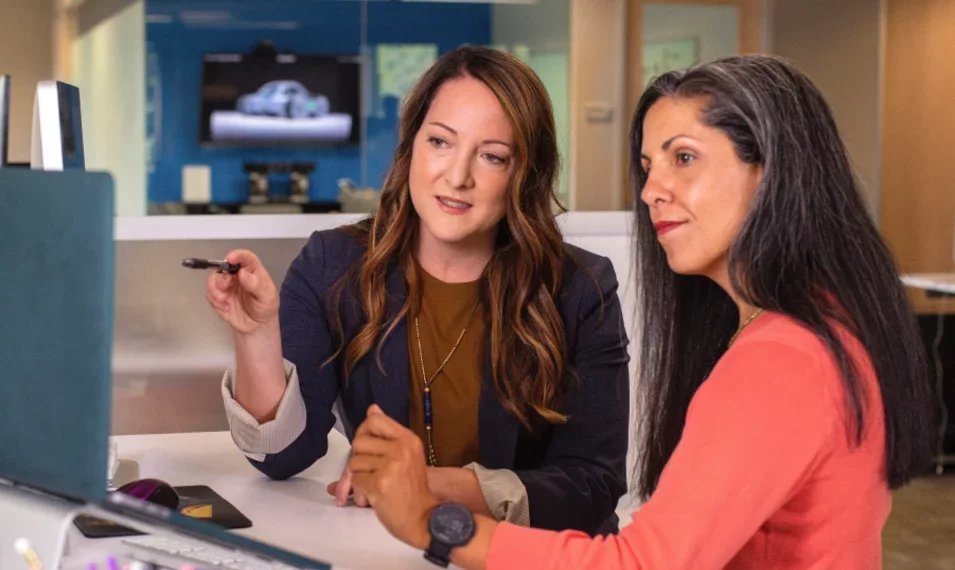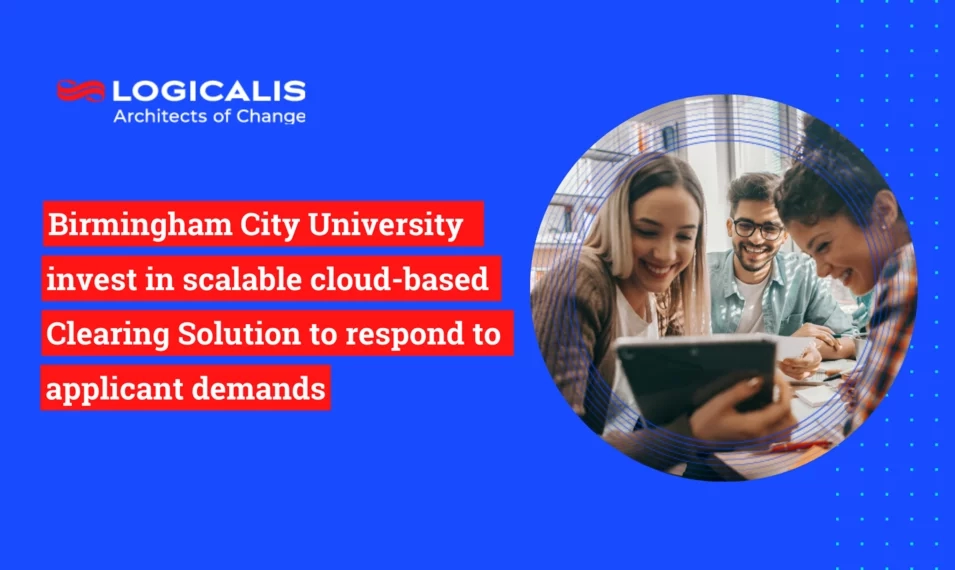, Nov 27, 2015
No day goes by without hearing in the news about the challenges that the NHS face and what it means for the people involved: doctors, nurses, patients etc. Trovus A Logicalis Company has been working with Simon on understanding NHS data found the experience fascinating. On this occasion, we were curious to take Simon’s view on how data might be able to help senior NHS professionals make better informed decisions.
Click here to download the PDF version of this expert interview.
Fanni: Hello Simon. For our readers, would you mind introducing yourself?
Simon: I am consultant physician by background and am currently on secondment at the NHS Leadership Academy at the Royal Liverpool & Broadgreen University Hospitals NHS Trust. As of February 2015 I will be taking up the role of Medical Director for Warrington and Halton Hospitals NHS Foundation Trust.
Fanni: For people who might not be familiar with how the NHS works, can say what your job entails?
Simon: The NHS is investing more and more in its leadership in order to get the very best outcomes for its patients and staff. I am part of a national programme taking senior clinicians and people from outside the NHS on a common journey as part of doing things differently.
Fanni: Given your role, what encouraged you to look further into data analytics?
Simon: Last year, I did a spell acting up as Director of Operations at the Royal Liverpool, accountable for delivery across a range of performance measures. Hospitals are fast changing environments and I found myself constantly craving information about where the problems were and why they occurred. Data should help not lonely identify the issues but also meaningfully address the issues.
Fanni: Would you say data is what drives you to form meaningful decisions?
Simon: Yes, definitely. Knowing that we have access to a lot of data, with performance metrics and ever growing targets, this data proves to be extra valuable. The fact is we have so much data and this can be great starting point for both short and long term decisions. Knowing when to introduce more beds, how to go about staffing, the timing of staffing, roles and responsibilities are all decisions that should be made with the help of data driven insights. Gut feelings are just not good enough. However, you can also find yourself overwhelmed with data too. Like many others, one of the areas that we needed to concentrate on was patient flow around ‘bottle necks’. The part of the system where there is a delay or wait is known as a ‘bottle neck’. We need to understand what these ‘bottlenecks’ are and then address them, as opposed to going on a hunch. Potentially too much of what we do is based on gut instinct instead of being driven by data and proper BI.
Fanni: Did you face any challenges throughout the project?
Simon: Certainly. We have an awful lot of data which we don’t use as well as we could. We need to identify where specific expertise lies and how to fill this gap by gaining assistance from external support. I have learnt that partnerships have to be formed between those within our organisation and third party suppliers. By using outside help we are also gaining an understanding on how other industries work. Healthcare is not as unique as sometimes it is perceived. In addition to the sheer volume of the data, the issue of data quality can also be divisive and can be debated endlessly.
Fanni: How did you go about resolving the debates around data quality?
Simon: I have to declare I’m not a data genius by any means, but it’s good to get advice from people who are. One of the most common defences against change, particularly from clinicians, can be that the quality of their existing data isn’t good enough to rely on. But there is a real danger of debating the quality of data endlessly, instead of making something out of what you have as a starting point. I genuinely think that understanding the data that is available and making something useful out of it is a good enough starting point and you can go form there. Because of the vast amount of historic data, despite the discrepancies in the quality, you can still correlate certain variables and run models on it.
Fanni: You haven’t mentioned forecasting...does predictability feature on your wish list?
Simon: Absolutely. Forecasting is a big element of what we do currently, but we definitely need to use it more. With the vast amount of historical data, potentially our outcomes are quite predictable. We don’t use forecasting to make as many real-time or even long-term decisions as we could. Trajectory can be simply a ‘finger in the air’, rather than being always data driven. Resourcing and going through a journey is impeding the amount of forecasting. Spending time doing the here and now is halting us from looking into the future in more detail. Effective and reliable forecasting will have a massive influence on recruitment of staff, how you manage the staff and the ways in which we invest.
Fanni: Talking about effective business intelligence, are there any other industries or countries that you aspire to and look towards for best practice?
Simon: Good question! Across the global sector, some countries do really well and some not so well. I would say the Netherlands and the US appear to very data driven but their results can be patchy too. In the UK we are lucky in that we have a national system that we possibly don’t use as much as we could. In saying this, I would have to say that here in the UK, taking into consideration the amount of GDP that is spent on our healthcare compared to other sectors, we are often doing much better than we give ourselves credit for. But often we need to be more efficient with the way we work and make more strategic decisions based on the resources that we have.
Fanni: Do you measure the real benefits, data analytics deliver for you? Do you have any ROI statements?
Simon: The bottom line is the quality of patient care, their experience, the effectiveness of our delivery and the safety in which we administer care. With this comes financial implications which is of course intrinsically entwined with the quality of care. I would benchmark patient feedback and performance of staff standards which is a single metric based on a great deal of data. The strategic decisions that drive our results need to improve performance. Improving the way we administer care has a direct impact on patient care and patient experience.
Fanni: Do you have specific targets or goals that you are seeking to achieve?
Simon: As mentioned before, the quality of care is the most important measure, however I found that it is extremely hard to measure. For instance, A&Es need to comply with a national 4 hour target but it doesn't necessarily tell you the full story in an accurate way. It’s more than just about the time spent in an Emergency Department, it is a measure of the whole system and whilst time is easy to measure, it’s about more than time. The quality of the care you provide can be measured in various ways.
Fanni: Can you please explain in more detail what you mean by not getting the full picture just by looking at the 4 hour target?
Simon: There are examples where patients require more time and therefore fall outside the 4hr window. This doesn’t necessarily mean that they have not experienced a good quality of care when you ask them. It might mean that they could actually go home instead of staying in hospital for a night etc; We of course need targets to meet, but it does not necessarily provide an accurate measure for patient satisfaction. I fear that focusing purely on a number might result in the wrong decisions. I advocate that data could be and should be used in a way to understanding accurately the ‘whys’. Unfortunately we do not have a lot of flexibility with these metrics when measuring the quality of care but it doesn’t necessarily mean the status quo is the only other option.
Fanni: Thinking about the future, can you describe the ideal scenario when it comes to using insights?
Simon: The ideal scenario is that even when I am physically outside of the hospital building, I could still have a picture of what is going on. So it has to be real time, it has to be mobile. But there is also something about ’simplicity’, simplicity about accessing the data but also how the information is presented. We are often overwhelmed with data, so I need to understand quickly if something is wrong and be able to drill down to understand the details. When dealing with simplicity you need to have confidence in your data.
Fanni: Is there anything that you can look back on and are proud of?
Simon: I am proud of the fact that like many Trusts we have done an awful lot of work around data quality and patient pathways. Particularly around elective pathways which are non-urgent care pathways for patients. We’ve gone a long way to improve the way the data is represented and what is going on with these pathways. In this respect, we’ve made a lot of progress. More than that, I think there is an overwhelming understanding throughout that we don’t just chase a number just for the sake of it. ‘We do the right thing for the patient’ is not a bad attitude to have.
Fanni: and finally, If you could have one thing tomorrow, what would it be?
Simon: I would want the ability to sit at my desk or use a mobile device and have a strong sense of how things are going and have confidence that I know whether things are alright or not. I don’t necessarily have to be onsite but by taking into account all the domains of interest, I can then make an interpretation of how the organisation is performing. It needs to be simple and straightforward, i.e. a press of the button and a glance at the screen. This would give me better quality of sleep at night when I’m at home and I’d feel a lot more at ease. As Winston Churchill said I think in reference to someone else ‘I worry about lots of things many of which have never happened’. Knowing what to worry about and what not to ‘worry’ about would be a big step in the right direction.














